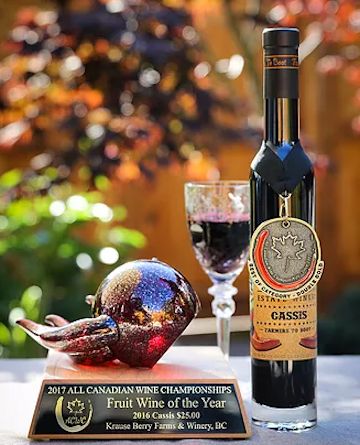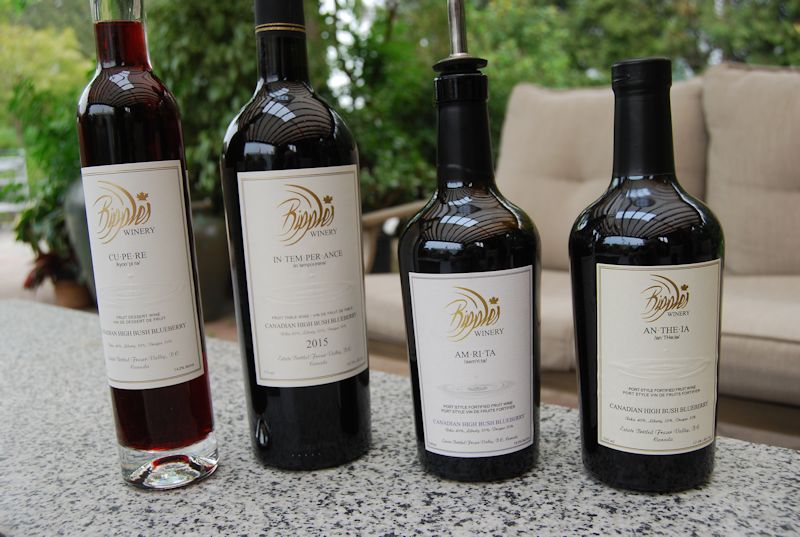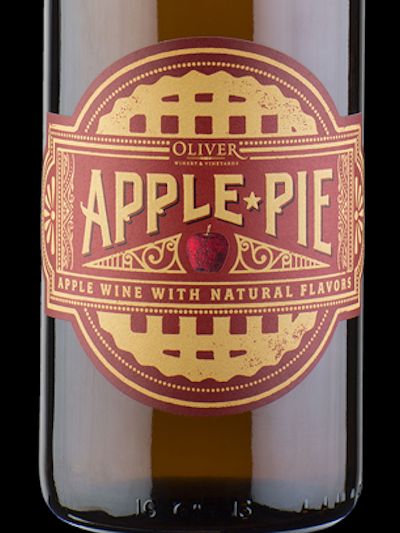Robert Bell's
Wines of Canada
Since 1992
Fruit Wines

The Canadian Fruit Wine industry is a thriving one there are over 180 fruit wineries operating in Canada. Every province has wineries that produce fruit wines. High quaility standards are in place, ensuring sensational wines from all producers.
Classic Fruit Wines
- There are several variations of fruit wine that can be manufactured.
Wines may be produced strictly with fruit, while some variations are blended with grapes.
Processing methods vary, enabling producers to offer several product variations, even if
only one kind of berry is available.
- The definition of fruit wine varies, but generally fruit wine is made from the juice of sound, ripe fruit, fruit juices or concentrate, without containing any grape products. The alcohol content in wine can vary, according to certain regulations, fruit wine has to be greater than a minimum of 7.1 percent alcohol. If greater than 14.9 percent alcohol by volume, it can be labelled as a 'dessert' wine or 'aperitif.' Light wine is considered that of 9 percent alcohol by volume or less.
- There are three basic kinds of wine variations that can be produced on top of a classic variety.
- Iced fruit wine - This is any fruit wine that has been fermented
from juice through cyro-extraction. At this stage, there is no measurement of what fruits should yield in the must.
- Fortified fruit wine - This is the wine product obtained by adding alcohol, derived from the alcoholic fermentation of a food source and distilled to not less than 80 per cent alcohol by volume. In addition, a fortified fruit wine shall have an actual content no less than 14 per cent alcohol by volume.
- Sparkling fruit wine - This wine is impregnated with carbon dioxide to a minimum of 200 kPa at 10 degrees Celsius and has an actual alcoholic strength of not less than 8.5 per cent by volume. As well, sparkling wine has to be, or derive its effervescence exclusively, from primary or secondary alcoholic fermentation in a closed vessel.
- Iced fruit wine - This is any fruit wine that has been fermented
from juice through cyro-extraction. At this stage, there is no measurement of what fruits should yield in the must.
- Sparkling wine can be produced using two methods: the traditional method or the charmat method.
- The traditional method produces a sparkling wine through a secondary fermentation in a glass bottle that has a capacity not exceeding five litres. In addition, the finished wine shall be sold in the bottle in which the secondary fermentation took place, and will not have left the bottle prior to final corking.
- The Charmat method produces sparkling wine through primary or secondary fermentation in a closed vessel having a capacity exceeding five litres. This process may not take less than six months from the start of the alcoholic fermentation, including aging at the undertaking where the fruit wine was made.
- The traditional method produces a sparkling wine through a secondary fermentation in a glass bottle that has a capacity not exceeding five litres. In addition, the finished wine shall be sold in the bottle in which the secondary fermentation took place, and will not have left the bottle prior to final corking.

How Fruit Wine is Made *
With fruit wine, the maturation period is much shorter than with grape wine (one to six months, as opposed to eight to twenty-four months). Fruit wine producers also have the added benefit of multiple harvest periods (cherries ripening in early July and apples in September), and can also use frozen product, in many cases without sacrificing quality. This extended harvest and short fermentation period allows producers to maximize use of equipment and facilities.
Fruit wines can be vinted in a number of ways and made from a variety of different fruits and berries. Putting a general label on the category is difficult. The wines range from dry, still table wines to light, fruity sparkling wines to intense, sweet dessert-style products.
Raw fruit material can also be much less costly than grapes. Substandard fruit (mal-formed, smaller sizes, cracked, split) can be used at significant savings. Fruit that would normally be earmarked for juice can now be processed into wine, a product that commands a significantly higher price. This translates into important value-added activity for fruit framers across the country.
Fruit Wines of Ontario
Fruit Wines of Ontario is the association that establishes and maintains high standards of quality for the fruit wines in Ontari.o
Over the last three years, the association has developed a set of Quality Certified (QC) standards. The QC program is modelled on the VQA regulations, and functions with the co-operation of the LCBO in Ontario who taste and test fruit wines on the same basis as VQA grape wines. Sales of QC fruit wines have increased dramatically in the last two years and are now making inroads into the LCBO retail system. A list of wineries that produce fruit wines can be found here
 |
Fruit Wine and Cheese Apples wines are fantastic with sharp cheddars, especially 5 year old Quebec Cherry wines are lovely with sof t cheeses such as Brie and Camembert Peach wines are great with Gouda, Brie, Edam and Blue |
* Dominic Rivard ~ The Daily Fruit Wine
Home | About | Sitemap| Fortified Wines | Organic Wines |Robert's Report | Icewine |